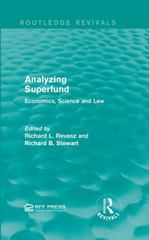Question
Understanding Interest 1. If you could earn $100 or $120 for doing the same job, which would you choose? __________ 2. If your employer gave
Understanding Interest
1. If you could earn $100 or $120 for doing the same job, which would you choose? __________
2. If your employer gave you a choice of being paid $100 today or $120 if you wait until tomorrow to be paid, which would you choose? ________________
3. What factors did you consider when making the decision in Question 2? ________________
_____________________________________________________________________________
Interest can work the same way. Sometimes being willing to wait means that you get more money. But, you have to make sure that you're comparing the correct amounts and that you're considering all the important factors.
So, first understanding the difference between Simple Interest and Compound Interest:
Simple Interest: interest that is paid one time at the end of the agreed-upon period.
For example, if you have $100 and put it in a bank account that pays 6% interest per year. At the end of the year, you have $106. If you left it in that account for 6 years, you would have $136.
Formula:
A = P (1 + rt)
A = Total Amount
Principal = principal (the amount you started with)
r = interest rate
t = time period elapsed
Applied Formula: A = $100 (1+ (.06 x 6))
A = $100 (1 + .36)
A = $100 (1.36)
A = $136 in 6 years
4. Try this yourself: How much would you have at the end of 3 years if you put $200 in a savings account that paid 5% simple interest per year?
Compound Interest: interest that pays on both the principal and the accumulated interest from prior periods.
With compound interest, if you put $100 in the bank at 6% interest per year, at the end of 1 year, you would have $106. However, the following year would pay interest on the original $100 plus the $6 worth of interest that was added for the first year. So, for the second year, it would pay 6% of $106, or $6.36.
Formula:
A = P (1+ r/n)nt
A = Total Amount
P = Principal (original amount)
r = interest rate
n = number of times interest is compounded per time period
t = number of time periods elapsed
Applied Formula: A = $100 (1 + (.06 1)1x2
A = $100 (1 + .06)1x2
A = $100 (1.06)2
A = $100 (1.1236)
A = $112.36
5. Try it yourself: How much would you have at the end of 3 years if you put $200 in a savings account that paid compound interest at 5% per year, compounded yearly?
6. Is this better or worse than the simple interest in Question 4? ________________________
7. What if they paid compound interest at the rate of 5% per year, compounded monthly?
8. Do you get more money if they compound the interest more frequently or less frequently? ________________________________
Step by Step Solution
There are 3 Steps involved in it
Step: 1

Get Instant Access to Expert-Tailored Solutions
See step-by-step solutions with expert insights and AI powered tools for academic success
Step: 2

Step: 3

Ace Your Homework with AI
Get the answers you need in no time with our AI-driven, step-by-step assistance
Get Started


